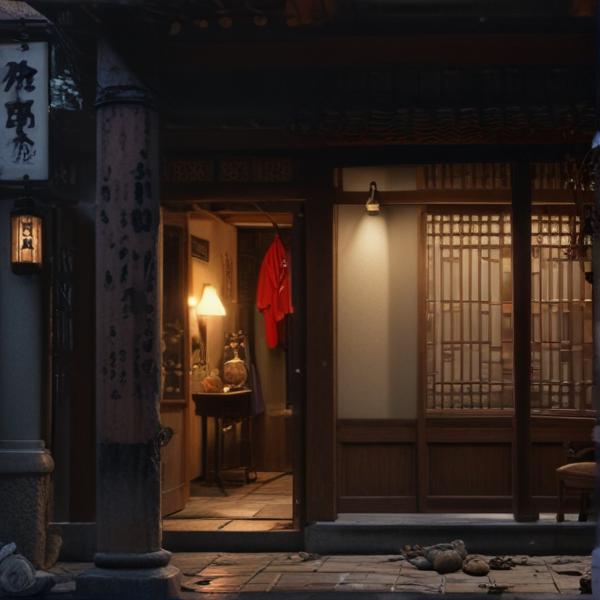基本信息 (Basic Information)
含义与用法 (Meanings & Usage)
中文核心释义 (Core Chinese Meaning): 用手指把东西夹住或挤压,多指用拇指和其他手指合力压或夹。
英文核心释义 (Core English Meaning): to pinch; to squeeze or mold something with the fingers
象形意义 / 为何这么写 (Pictographic Meaning / Writing Rationale)
文言文释义 (Classical Chinese Meaning)
与现代意义相近,均表示用手指夹住、挤压或塑造。Similar to modern meaning; refers to pinching, squeezing or shaping with fingers.
深入学习 (In-depth Study)
字源故事 (Origin Story)
字形演变 (Character Evolution)
常用词语和例句 (Common Words & Examples)
捏住 (to pinch or hold tightly)
他用手捏住了鼻子,不让自己闻到臭味。
Eng: He pinched his nose tightly to avoid smelling the bad odor.
捏造 (to fabricate; to make up (a story, evidence))
他为了推卸责任,捏造了一个假理由。
Eng: He made up a false excuse to shirk responsibility.
捏面人 (to mold figurines from dough)
那位手艺人很会捏面人,做得栩栩如生。
Eng: The craftsman is skilled at molding dough figurines, making them look very lifelike.
相关成语 (Related Idioms)
捏一把汗
Meaning: to sweat nervously; to be on edge with anxiety for someone or something
多语言翻译 (核心释义) (Translations (Core Meaning))
- French: pincer, façonner avec les doigts
- German: kneifen, kneten, formen
- Spanish: pellizcar, moldear con los dedos
- Italian: pizzicare, modellare con le dita
- Portuguese: beliscar, moldar com os dedos
- Russian: щипать, лепить пальцами
- Arabic: يقرص، يشكل بالأصابع
- Persian: نیشگون گرفتن، شکل دادن با انگشتان
- Dutch: knijpen, vormen met de vingers
- Polish: szczypać, formować palcami
- Vietnamese: véo, nặn bằng ngón tay
- Ukrainian: щипати, ліпити пальцями
视频学习资源 (Video Learning Resources)
通过以下链接在热门视频网站搜索 "捏" 的更多讲解:
Search for more explanations of "捏" on popular video sites:
- 在 Bilibili.com 搜索 "捏 字源 说文解字" (Search on Bilibili)
- 在 YouTube.com 搜索 "niē 捏 character origin etymology" (Search on YouTube)
网络参考 (Web References for "捏") ()
网络内容摘要 (Web Content Summary):
捏 的核心含义是“用手指把物体夹住并压紧”,常见的如“捏泥人”、“捏住鼻子”等。 捏 primarily means "to pinch, to knead, or to mold with fingers," for example, making clay figurines ("捏泥人") or pinching one's nose ("捏住鼻子").
- 字形起源: “捏”最早的字形为“圼”,金文中的“土、软泥”与“日、晾晒”结合,意为用手捏泥并晾干。后经变化,强调了“手工用泥捏塑”的意思。 Etymology: The earliest form was “圼,” combining symbols for "mud" and "sun (drying)," indicating molding clay by hand and drying it. Later forms emphasized the handcrafted aspect.
- 书写演变: 甲骨文和金文结构为左右,后调整为上下结构,强调动作和手工含义。 Script Evolution: The character changed from a side-by-side to an up-down structure over history, highlighting the action and handicraft meaning.
- 常用搭配: “捏造” (fabricate), “捏一把汗” (break into a cold sweat from nervousness); “捏泥人” (clay figurine making)是中国传统民间艺术。 Common usages: "捏造" (to fabricate), "捏一把汗" (to be nervous), and "捏泥人" (a traditional Chinese clay figurine art form).
- 易混淆点: “捏”与“捺”(按压)、“掐”(用力夹)、“揉”(搓捏)在动作上有细微区别,注意用法。 Easily Confused Characters: "捏" differs from "捺" (to press), "掐" (to pinch tightly), and "揉" (to knead or rub); pay attention to subtle distinctions in meaning.
“捏”不是《说文解字》中的原文字,而是后来的通用字。 "捏" is not found in the ancient dictionary Shuowen Jiezi; it became standard later.
信息有限,但已囊括字形由来和常见用法,便于学习和理解。 Information is limited, but it covers the etymology and common usages to aid learning and understanding.
汉字"捏"的起源、演变过程-汉字字源辞典
"圼 "是" 捏 "的本字。 圼 ,金文 (土,软泥) (日,晾晒),表示捏泥并晾晒。 隶化后楷书 将金文字形的左右结构,调整成上下结构,将金文字形中的"日" 写成 。 楷书异体字 将"日" 写成"臼" (疑为两个"爪" 、 的混合),将"土" 写成"工" ,强调用软泥捏塑的"手工"含义。
汉字"捏"的起源与演变(源流) - 汉字字源网 - 难检字字典在线查询
难检字字典收录2975个汉字的源流词条,基本涵盖了常用汉字的字源分析,是学习和研究汉字的必备工具。 ... 来源:难检字字典 作者:难检字 时间:2024-06-11 15:02 阅读:511. 汉字"捏"字字源. 捏 nie 【字形】后起字,《说文》无。 ...
更多图片 (捏 More Images) ()
